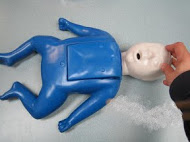The cesarean section is a surgical procedure in which the doctor creates a surgical incision in the abdomen to deliver a baby. The complications are considered rare, but they can oftentimes occur. The possible complications from a cesarean wound are the most common and least severe complications from the procedure.
Infection
Wound infections that occur after a cesarean section develop once bacteria on the skin enter and multiply within the skin. The symptoms include warmth, redness, tenderness, swelling and discharge particularly putrid or yellow, green or whitish discharge.
When it comes to severe infections, it also produces systemic symptoms such as fatigue, fever, poor appetite and lethargy. Most cases of infections require exploration and drainage of the wound using a scalpel to release the pus and taking out the dead tissue. This is followed by the administration of oral or even intravenous antibiotics. It is important to note that the cases of cesarean wound infections has reduced with the help of antibiotics that are administered before or during the surgical procedure.

Hematoma
Hematoma is considered as another common cesarean wound problem that occurs in some deliveries. A hematoma is basically a mass or collection of blood. During a cesarean section, the doctor closes the abdomen in layers by initially suturing the uterus and then the abdominal wall and then the skin.
In the short term, the several layers of closure functions as a barrier against infection. Hematomas develop once bleeding occurs after the wound has been sealed shut. The blood is trapped and adds pressure on the neighboring tissue, squeezing out the nutrients and oxygen. In case the pressure is too high, it can compromise the sutures, resulting to a portal for bacteria to enter the body while the blood provides a nutrient-rich medium for the bacteria. As for the infection, the treatment involves exploration and drainage of the wound using a scalpel and even antibiotics sometimes.
Dehiscence
Dehiscence or separation of the wound perimeters is an uncommon complication of cesarean wounds. Take note that dehiscence occurs due to infection or the development of a hematoma when the tension on the wound causes the margins to break away or when chronic disease or nutritional issues causes the body to neglect the healing process.
The doctor usually advises those with the cesarean section to limit engaging in activities such as driving, lifting and abdominal exercises for a few weeks after surgery to minimize the risk for tension dehiscence. Depending on the cause, the wound could not be stitched closed again. Take note that the wound should be allowed to fill in naturally which is a time-consuming process that inevitably results to a bigger and irregular scar.
